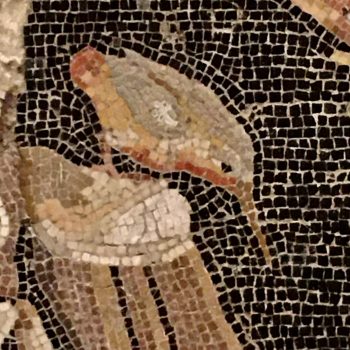Projects
Patrick Geddes Centre, Riddle’s Court (Royal Mile, Edinburgh) – Thomas Bonnar painted ceiling
Patrick Geddes (the great Victorian biologist, sociologist, geographer, philanthropist and pioneering town planner), was a man who enjoyed discussing ideas and bringing people together. In 1892-3 Geddes developed Riddle’s Court as Edinburgh University’s Hall of Residence. In 1897 he commissioned Thomas K Bonnar to supervise decoration of a painted ceiling – the resulting decoration consists of picture-book panels illustrating historical events, prominent Edinburgh citizens and snippets of Geddes’ own philosophical musings.
The historic Thomas Bonnar ceiling, which is painted onto lining paper adhered to the plaster substrate, was damaged during extensive building refurbishment in 2016. During aggressive structural works, the plaster shifted and cracked in several places, then was consolidated leaving broken plaster fragments firmly re-set but completely misaligned. As a result, the lining paper was left weakened, torn and detached on the decorative side of the ceiling.
In 2016, Scottish Historic Buildings Trust (SHBT) commissioned Scottish Wall Paintings Conservators to carry out emergency conservation treatment to stabilise and repair the Thomas Bonnar ceiling at Riddle’s Court.
- Vulnerable painted paper fragments were carefully removed and cleaned to remove debris. Their locations were carefully recorded, then they were labelled and stored for later re-attachment.
- Damaged plaster was consolidated and, where necessary, carved back to a level surface.
- Detached lining paper fragments were re-adhered like puzzle pieces.
- Small losses were inpainted.
Further paper detachment was predicted to occur over the coming years. Indeed, since the building complex re-opened in late 2016 there have been a number of instances when gravity has resulted in occasional hanging paper curls. These new cases are inevitable due to significantly weakened bonds over the entire ceiling, between paper, plaster and paint, as well as within the layers themselves. Fortunately instances of detachment are becoming much less frequent over time. Treatment was last required in December 2019, and the condition of the ceiling continues to be regularly monitored for changes.










